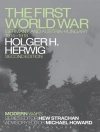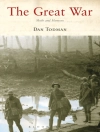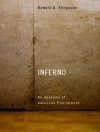This detailed history of Air Intercept radar traces the development of this vital military technology with the Royal Air Force during WWII. In the years after World War I, the United Kingdom was desperate to develop some form of protection from an enemy air strike. As early as 1923, the British Army had devised ‘;sound mirrors’ that could detect aircraft up to twelve miles away. This technical history traces the development of military radar technology from this early, experimental phase to the creation of the first air-to-air radar systems and their uses in battle. Historian Ian White sets this fascinating narrative within the larger political, military, economic and technological context of the era. Through World War II, Air Intercept radar was a vital asset in protecting RAF bomber forces as well as the country itself. But developing the technology required the tireless work of physicists and engineers in the Air Ministry Research Establishment, particularly members of the Establishment’s Airborne Group working under Dr. Edward Bowen. Their Airborne Interception radars, such as the AI Mk. IV, were used in Blenheim night-fighters during the winter Blitz and by Mosquito during the Baedeker Raids. This in-depth history covers the introduction of centimetric technology at the Telecommunications Research Establishment, the creation of centimetric AI, and their installation in the Beaufighter and later marks of the Mosquito. It describes the creation of the Radiation Laboratory at MIT and concludes with a section on further developments during the Cold War.
Ian White
History of Air Intercept Radar & the British Nightfighter 1935-1959 [PDF ebook]
History of Air Intercept Radar & the British Nightfighter 1935-1959 [PDF ebook]
Buy this ebook and get 1 more FREE!
Language English ● Format PDF ● Pages 340 ● ISBN 9781526743480 ● Publisher Pen and Sword ● Published 2007 ● Downloadable 3 times ● Currency EUR ● ID 7050605 ● Copy protection Adobe DRM
Requires a DRM capable ebook reader












